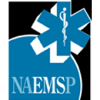This article originally appeared in the Article Bites blog of the National Association of EMS Physicians and is reprinted here with permission.
By Al Lulla, M.D., NAEMSP Article Bites Editor
Article Reviewed: Klebacher R, Harris MI, Ariyaprakai N, et al. Incidence of Naloxone Redosing in the Age of the New Opioid Epidemic. Prehosp Emerg Care. 2017;21(6):682-687.
Background & objectives. The surging opioid epidemic has largely been combated with the use of intravenous and intramuscular naloxone administration. More recently, intranasal naloxone has been shown to be easily administered by not only EMS providers, but also law enforcement and family members to help reverse potentially fatal overdoses. Recently, mixed overdoses and ingestions with far more potent agents (such as carfentanil) are on the rise, necessitating repeat naloxone dosing. The primary objective of this study was to determine the incidence of repeat naloxone administration for patients with suspected opioid overdose. The secondary endpoint was a more detailed descriptive and statistical analysis evaluating the precise characteristics associated with individuals who required repeat naloxone dosing.
Methods. The investigators conducted a retrospective chart review of the electronic health record of the largest EMS service in New Jersey. Charts were searched for the presence of naloxone administration and other key words including “drug overdose,” “poisoning,” and “unresponsive.” Charts were examined between April 2014 and June 2016. In order to be included in the study, patients had to be over the age of 17 years and administered an initial dose of 2mg of intranasal naloxone. Initial naloxone administration was performed by law enforcement or a BLS unit per New Jersey state regulations. Subsequent doses of naloxone were administered by ALS units. Resolution or response to therapy was defined as GCS of 15. In addition, demographic data was extracted from each patient encounter.
Key results. In total, 2,166 patients received naloxone for suspected opioid overdose during the study period (April 2014 to June 2016). The key results from the study were as follows:
- 1,971 of 2,166 (91%) of patients had reversal of overdose symptoms after a single dose of naloxone administered by law enforcement or BLS units
- 195 of 2,166 patients (9%) required a second dose of naloxone by an ALS unit given failure to respond after the initial dose
- 53 of 2,166 patients (2.4%) required a third dose of naloxone by an ALS unit
- Patients who required a second dose of naloxone had a mean GCS of 5.3 (standard deviation of 3.7). The mean respiratory rate was 10.4 breaths per minute with a mean oxygen saturation of 86.8%.
- Patients who required a third dose of naloxone had similar mean GCS scores (4.9) and oxygen saturations (86.4%). Two-thirds of the 53 patients who received a third dose of naloxone improved to a GCS of 15, suggesting that the remaining one-third patients may have had an alternative diagnosis for their altered mental status.
Takeaways on naloxone dosing
- Among patients with suspected opioid overdose treated with intranasal naloxone by first responders or ALS units, 91% of patients had complete reversal of symptoms after a single dose of naloxone, with 9% requiring repeat dosing
- Naloxone is overall very effective at reversing symptoms of opioid overdose after a single dose
What this means for EMS. With the rising incidence of mixed ingestions, more potent opioids such as carfentanil, EMS providers are faced with more complexities in the management of opioid overdose. This study suggests that, in addition to basic support of ventilations, naloxone is still the mainstay of management in these patients, and highly effective at reversing overdose symptoms. Furthermore, this study suggests that in the majority of cases, first responders, including law enforcement and BLS units may be able to safely manage opioid overdose without the need for ALS units. This may improve resource utilization in EMS systems that are already stretched very thin.













